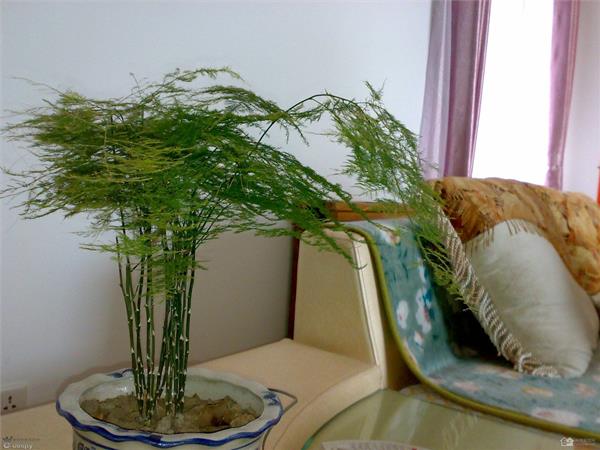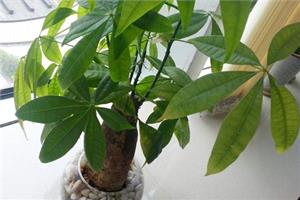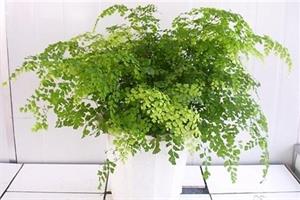How to cultivate asparagus and its prevention and treatment
Asparagus has become one of the common family potted plants. However, many owners do not understand the breeding methods of asparagus, which leads to the yellowing or death of asparagus leaves. So how should asparagus be cultured? Disease and prevention of asparagus.

Culture methods of asparagus
1. Potted soil: fertile sandy loam should be used to cultivate asparagus, which should be warm and humid, rich in rotten branches and good drainage. Generally, it can be prepared in the proportion of 4 parts of garden soil, 2 parts of rotten leaf soil, 2 parts of compost soil and 1 part of sand. And to change the soil regularly to add fertilizer. If excessive fertilization causes "watering roots", it is necessary to pour the pot to remove the fertilizer, irrigate the soil with clean water, and then put it into the new soil for breeding.
2. Watering: watering is the key point of asparagus cultivation and culture. too much watering and too wet basin soil can easily cause root rot, and too little watering will lead to scorched and yellowed leaf tips. Therefore, in the process of watering, it depends on the weather, growth and the dry and wet condition of the basin soil, so that if it is not dry, it will be watered thoroughly. When the weather is hot and dry, water spraying can be used to humidify and cool the leaves, but less watering is needed in winter.
3. Fertilization: asparagus is not good at fertilizer, but it can not be short of fertilizer. Limited by potted soil, asparagus culture must replenish nutrients in time to meet the growth requirements. In the process of fertilizing asparagus, it is necessary to apply more times and less amount, and do not apply thick fertilizer, otherwise it will cause leaf yellowing. Generally, you can choose to apply rotten thin liquid fertilizer once a month, and after the plant grows and finalizes, you can properly control and reduce fertilization.
4. Lighting: asparagus culture can not be exposed to the hot sun, hot season, should be placed in a cool and ventilated place. At the same time, asparagus flowering is not only afraid of wind, but also afraid of rain, should pay attention to good ventilation, good weather can be properly placed outside to receive sunlight. The temperature of potted asparagus in winter should be kept above 5 ℃ to avoid freezing.
5. Display: asparagus is mostly used for indoor desk decoration. Because asparagus is afraid of smoke and dust, if toxic gases are encountered, the branches and leaves are easy to yellow. therefore, asparagus should be placed in a clean and well-ventilated environment.
Breeding method of asparagus
Asparagus is usually propagated by sowing or ramet propagation. Sowing should be carried out in the middle of spring, and it can germinate in 30-40 days after sowing. If it grows normally, it can blossom and bear fruit after 4 years of culture, and asparagus of 3-5 years can be propagated separately. In ramet propagation, the joint of the rhizome should be cut off with a sharp blade so as not to affect the growth and ornamental effect of asparagus in the future.
Disease and control of asparagus culture method
The main results are as follows: 1. The branchlets are yellow but not detached: it is mainly caused by the lack of nutrients in the basin soil, hard soil, poor ventilation and malnutrition. The solution is to replace the basin with the culture soil rich in organic matter. at the same time, we should often loosen the surface of the basin soil and strengthen fertilization to supplement nutrition.
2. the color of asparagus branches is dark yellow or yellowish green: it is mainly caused by strong light or too much watering, so it should be transferred to a shaded place (such as a window with curtains) in time to avoid direct sunlight and pay attention to not overwatering at the same time.
3. The roots of asparagus are rotten and the branches are scorched and yellow: this phenomenon may be caused by strong winds in hot seasons or long-term stagnant water in flowerpots. So when summer comes, we should pay special attention to thunderstorms or typhoons.
The above is the introduction of this article, I believe you have a simple understanding after reading it, if necessary, you can continue to pay attention to the No. 1 home network for more information.
Related
- Wuhan Hospital Iron Tree Blooming Result Was Instantly Frightened by the Gardener Master
- Which variety of camellia is the most fragrant and best? Which one do you like best?
- What is the small blue coat, the breeding methods and matters needing attention of the succulent plant
- Dormancy time and maintenance management of succulent plants during dormancy
- Minas succulent how to raise, Minas succulent plant pictures
- What are the varieties of winter succulent plants
- How to raise succulent plants in twelve rolls? let's take a look at some experience of breeding twelve rolls.
- Attention should be paid to water control for succulent plants during dormant period (winter and summer)
- Watering experience of twelve rolls of succulent plants
- Techniques for fertilizing succulent plants. An article will let you know how to fertilize succulent plants.



